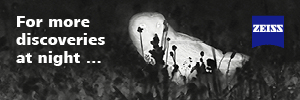Many, many years ago we stayed in a hotel in a small village in Strath Spey (‘Strath’ being the local name for a valley with a meandering river) for our first visit to Scotland. This was years before we discovered the islands off the west coast and we were just excited to be in Scotland with the prospect of spotting new species.
We arrived at our hotel, checked-in, had dinner/evening meal, and then went out for a walk up the hill next to the hotel, which turned out to be a golf course. There was a gentle breeze and warm sunshine and as we reached the top of the course we heard a strange sound, one that I have read described as a faint whistle followed by a much louder almost frog-like croak. We stared at each other in puzzlement and then scanned around for the source of the sound and to our amazement it was coming from a fat, long-billed bird that was flying up and down the edge of the nearby wood that we identified as a Woodcock. Moments later a Snipe came rocketing out of the wood, passing so close to us we could hear it’s wingbeats.
We reached the top of the golf course and were delighted to have a view across a substantial loch (lake), nestling between two hills and on it was a beautifully elegant Black-throated Diver, the first we had ever seen. All Divers (Loons) are beautiful but the Black-throat has IMHO is the most stunning and was a superb species to admire through my recently acquired Zeiss Dialyt 10x40B binoculars.
I have read reviews stating that (compared with porro models) these had no external moving parts but those authors clearly only had the eyepieces in mind as the Dialyts focussed by moving the external objective lenses. These high-quality, slim and elegant instruments were my field companions for 5 years until I traded them to obtain the rubber-armoured version which was more suited to our use of our binoculars in all kinds of rough terrains and habitats. They were wonderful and came with a highly practical rain-guard (eyepiece cover) which meant I never had to stuff them inside my jacket during rain.
Of course their 110m fov is easily outclassed by todays SF 10x32’s 130m!
Lee
We arrived at our hotel, checked-in, had dinner/evening meal, and then went out for a walk up the hill next to the hotel, which turned out to be a golf course. There was a gentle breeze and warm sunshine and as we reached the top of the course we heard a strange sound, one that I have read described as a faint whistle followed by a much louder almost frog-like croak. We stared at each other in puzzlement and then scanned around for the source of the sound and to our amazement it was coming from a fat, long-billed bird that was flying up and down the edge of the nearby wood that we identified as a Woodcock. Moments later a Snipe came rocketing out of the wood, passing so close to us we could hear it’s wingbeats.
We reached the top of the golf course and were delighted to have a view across a substantial loch (lake), nestling between two hills and on it was a beautifully elegant Black-throated Diver, the first we had ever seen. All Divers (Loons) are beautiful but the Black-throat has IMHO is the most stunning and was a superb species to admire through my recently acquired Zeiss Dialyt 10x40B binoculars.
I have read reviews stating that (compared with porro models) these had no external moving parts but those authors clearly only had the eyepieces in mind as the Dialyts focussed by moving the external objective lenses. These high-quality, slim and elegant instruments were my field companions for 5 years until I traded them to obtain the rubber-armoured version which was more suited to our use of our binoculars in all kinds of rough terrains and habitats. They were wonderful and came with a highly practical rain-guard (eyepiece cover) which meant I never had to stuff them inside my jacket during rain.
Of course their 110m fov is easily outclassed by todays SF 10x32’s 130m!
Lee



